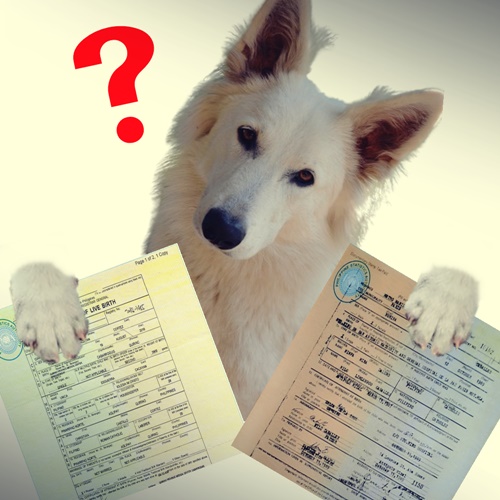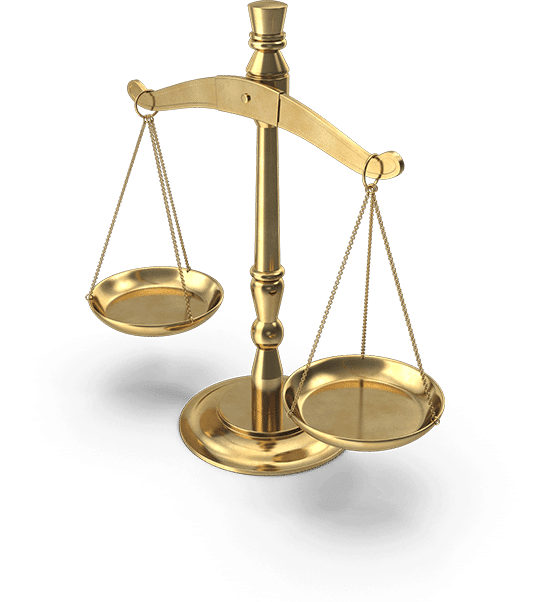What do you do if you have two Philippine Birth Certificates?
This article explains common problems that arise when someone has more than one Philippine birth certificate and how to fix them.
A double registration of a birth certificate usually requires a court case to be filed by a lawyer on behalf of the person involved.
Why do some people have two Philippine birth certificates?
How does double registration of a birth certificate happen?
A single birth may have been recorded twice in the Philippine civil registry system.
This might be your story:
Years ago, a child was born. This person’s birth was recorded in a Philippine local Certificate of Live Birth or a Report of Birth of a Filipino Abroad.
But one or more entries in the birth certificate were incorrect. Perhaps it was the name of the child. Perhaps the name of a parent. Perhaps the year of birth. Perhaps the parents’ marriage details. Perhaps the legitimacy of the child.
Later, the family wanted to correct the incorrect entry in the birth certificate, but they took short cuts.
Philippine law requires a court order to change an entry in the civil registry. To avoid the trouble of going to court, the family instead took the expedient of filing a second, entirely new birth certificate containing the corrected details of the child or of the parents.
This may have been filed as a claimed Delayed Registration of Birth, to make it appear that this was the first time the child’s birth was reported to the civil registry.
For whatever reason, whether by mistake or on purpose, there was already a birth record of the child when a new birth certificate was registered in the Philippines.
This new birth certificate may have been filed a year or more after the birth. It may even have been filed in a town or city different from where the first birth certificate was recorded.
Then the child used the second birth certificate from that point on. The details of this later birth certificate were since referred to in school records. The birth certificate became the basis for IDs. Its details were used for government records as the child grew up, including a passport, a marriage certificate, and even the birth certificates of that person’s children.
Every time this person needed to submit her birth certificate for official purposes, she would simply order another certified copy of the second birth certificate from the Philippine civil registry system.
Then the Philippine civil registry system changed its processes.
With the computerization of the Philippine civil registry’s database, it became easier for the Philippine Statistics Authority (PSA) to flag instances when the same person appeared to have two birth certificates. PSA protocol for such situations was to issue only the earlier registered birth certificate.
PSA Memorandum Circular No. 2019-23, dated September 13, 2019, confirmed the civil registry policy that, in case of multiple birth records, the birth certificate that was registered earlier must henceforth be the document issued by the PSA when a birth certificate is requested. This is now what happens when you have two birth certificates registered in the Philippines.
Consequently, people accustomed to ordering the later birth certificate have since been surprised that they can no longer access that document. Now, when they request an officially certified copy of their birth certificate from the PSA, they are issued the earlier birth certificate, with details that differ from the other documents they have been accumulating all these years, instead of the later birth certificate.
The discrepancies between documents usually involve substantive rather than merely clerical details. These discrepancies thus cause complications beyond mere inconvenience. Problems involving immigration, marital status, legitimacy, or inheritance are not uncommon. For these reasons, the details have to be legally reconciled.
What do you need to do if you have two birth certificates?
What do you do if there is double registration of a Philippine birth certificate?
The first birth certificate should be corrected and the second should be cancelled. As a general rule, Philippine law requires a court order before any change can be made to entries in the civil registry.
This means filing a case in court when the correction sought is substantive rather than merely clerical.
The case for should be filed with the Regional Trial Court of the city or province where the first birth certificate was registered. It is an adversarial case for Cancellation Or Correction Of Entries In The Civil Registry under Rule 108 of the Philippine Rules of Court.
The petitioner – usually the person whose birth is concerned or the parent – asks the court to cancel the second birth certificate. This is true even if the second birth certificate was registered in a different city or province.
Some errors do not require going to court because they can be corrected administratively by the Office of the Local Civil Registrar. These included mere clerical or typographical errors, or errors in the day or month of birth, error in the sex at birth, or changes in the first name or nickname. Instead of requiring a court case, an application to correct such entries can be made to the Office of the Local Civil Registrar where the birth certificate is registered.
However, changes on other entries require filing a petition in court. Among those are corrections involving substantive changes such as those affecting the status of persons (married or unmarried, legitimate or illegitimate, etc.), and other large changes such as the person’s year of birth.
(Notwithstanding the above, there may be instances where the proper form of a case is not as a petition under Rule 108 of the Rules of Court, but as a direct action under the Family Code of the Philippines. An example of such is when a father impugns the legitimacy of a child under Article 171 of the Family Code. The distinction is not merely procedural because it determines if the relief sought can be granted by the court.
See In Re: Petition for Cancellation and Correction of Entries in the Records of Birth, Rita K. Lee et al., G.R. No. 180802, August 1, 2022.
Cf Republic v. Olaybar, G.R. No. 189538, February 10, 2014 in which the Supreme Court upheld resort to a petition to delete a marriage record under Rule 108, considering that no marriage had ever actually been entered into.)
Why is it important to correct your birth certificate?
A Certificate of Live Birth or Report of Birth of a Filipino Abroad is a public document that consists of entries regarding the facts of birth in public records. The birth certificate is prima facie evidence of a child’s fact of birth and of the other entries and information on the document. A high degree of proof is needed overthrow the presumption of truth contained in a birth certificate.
Because it is often referred to for official records, transactions, and important events such as inheritance, property transfers, marriage, immigration, and others, it becomes necessary to address discrepancies by correcting a birth certificate.
It is often for these reasons that a double registration of a Filipino birth certificate should be fixed.
With which court should the case be filed?
A petition for correction or cancellation of entry should be filed with the Regional Trial Court of the city or province where the first birth certificate was recorded.
It is this Regional Trial Court which has the power to issue orders for the correction of entries in that city or province.
This same Regional Trial Court has the power to order the cancellation of the second birth certificate even if the latter is registered in another city or province. This is because, under the doctrine of ancillary jurisdiction, the court’s authority embraces all incidental matters arising from and connected to the main case.
The cancellation of the second birth certificate is an incident or necessary consequence of the petition to correct the entries in the first birth certificate. Ancillary or incidental demands, matters, or questions growing out of the main action may be resolved by the court. The court has jurisdiction over such issues is in aid of its authority over the principal matter.
(Republic v. Felix, G.R. No. 203371, June 30, 2020)
What do you need to prove to the court?
You have to prove there are good and valid grounds for the correction or cancellation of the entry in the civil registry. You have to prove that the correction or cancellation will cause the document to reflect the true and correct facts.
This requires presenting evidence to the court. What evidence you need depends on what correction you want the court to make.
The point is to prove that what you ask from the court aligns with the facts and the law.
Evidence includes the testimony of the person whose birth certificate is in question. He can testify to what he knows of the correct details of his birth certificate. The testimony of one or both parents can also be presented, as well as those of other witnesses with personal knowledge of documents or of the situation.
Aside from witness testimony, supporting documents may be offered to the court. For example, some of the following may be offered to the court:
Baptismal certificate
Voter’s affidavit
Employment record
GSIS / SSS record
Medical records
Business records
School records
Driver’s license
Insurance
Other civil registry documents, including of those of relatives
Government issued IDs or Passport
NBI/Police clearance
Land titles
Private records
Social media history
Others
Object evidence, such as DNA results, may also be submitted.
How long does it take?
How long a case will take depends partly on what evidence is available to prove the facts. The documentary and object evidence must first be gathered. Prospective witnesses must also be vetted and interviewed.
All these can take time, particularly if documents still have to be tracked down or retrieved from various persons or offices, or if the facts require additional object evidence.
A lawyer will draft the actual Petition for Cancellation or Correction of Entry under Rule 108 of the Rules of Court, along with the judicial affidavits of witnesses, on the basis of available evidence. The Petition and the judicial affidavits will need to be signed and notarized. Copies of all these documents and evidence must be submitted to the Regional Trial Court at the beginning of the case.
Upon filing of the Petition, the court will schedule the case for initial hearing and order that notice of the case be served to interested parties and relevant government offices. Notice of the first hearing will also be published once a week for three weeks.
Proof that these notice requirements have been complied with shall then have to be shown to the court at the first scheduled hearing.
The court will then calendar the case for reception of witness testimony.
The witnesses will testify to court and affirm the veracity of their judicial affidavits and evidence.
After the petitioner’s witnesses have testified, the petitioner’s evidence is formally offered for the consideration of the court.
The court will then allow the government or other parties in interest who may oppose the petition a turn to present their own evidence should they choose to.
After all parties have concluded presentation of evidence, the court may require the submission of memoranda for the respective parties to expound on their arguments.
The case will then be submitted for decision by the court. The rules provide that a court has 90 days from that point to render its decision.
Assuming the court grants a favorable decision, this decision will become final once it is served to all parties and no one files an appeal.
Circumstances may vary, but the above court process may take about a year to a year and a half from the time of filing the case until decision.
The final decision can then be registered with the Local Civil Registrar and the Philippine Statistics Authority so that the court order to change or correct of the birth certificate will be carried out.
Can you file the Petition for Correction or Cancellation of Entry in the birth certificate from outside the Philippines?
Yes. Both preparing and conducting the case can be done even if the petitioner is abroad.
Initial meetings with a lawyer are usually initiated through email and remote video conference between counsel and prospective client.
The evidence gathering then be done from overseas in coordination with counsel and with assistance in the Philippines.
The drafting of the Petition and judicial affidavits are also done in remote coordination with the lawyer, then these documents are notarized at either the Philippine embassy abroad or by a foreign notary then apostilled in accordance with the Hague Apostille Convention.
Most of the hearings require only the appearance of counsel rather than the petitioner in person. When the time comes for witnesses to appear before the court to testify, the trial court can allow testimony to be done remotely, through video conference from the Philippine embassy or consulate, if the witness is based abroad and unable to come to the Philippines.
It is important to choose reliable and experienced counsel to accomplish all of this, to ensure a smooth process and a successful case.
For questions or to consult a lawyer about cancelling or correcting a Philippine birth certificate, or on other matters, contact us at admin@lawyerphilippines.org






0 Comments